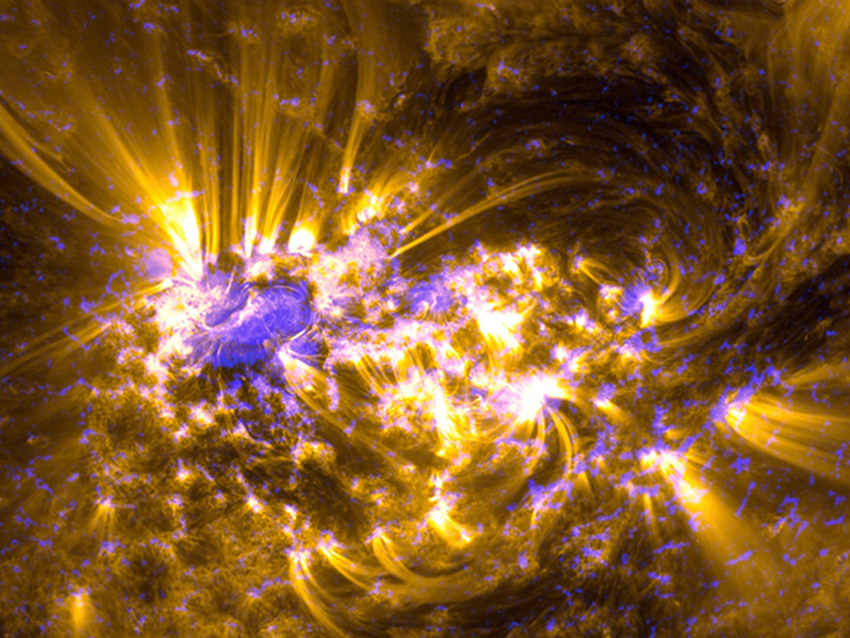
 Credit: NASA/SDO/AIA
Credit: NASA/SDO/AIA
X-Class
On July 12, Active Region 1520 on the surface of the Sun erupted in a powerful explosion, known as an "X-class" solar flare. The eruption peaked at July 12, 2012 at 12:52 PM EDT. These X-class flares are the most dangerous kind, and can cause observable effects on earth as the Sun fires high-energy particles into interplanetary space. Some of these effects can be harmless, and beautiful, like stronger than normal aurorae, the Northern and Southern lights. Some of these effects can be dangerous, like disruptions in satellite communications, or problems with the electrical power grid. The image above is a combination of an extreme ultraviolet light image from the Solar Dynamics Observatory (SDO) along with
an SDO image of the Sun's local magnetic field. The extreme ultraviolet image highlights giant plasma loops over Active Region 1520. The magnetic image, or magnetogram is shown in purple and highlights the strength of the magnetic field near AR 1520. The tangling of the magnetic field near active regions provides the energy to power flares. The July 12 flare generated a coronal mass ejection (CME) moving at 850 miles per second, as measured by the Solar Terrestrial Relations Observatory (STEREO-B). That's 3 million miles per hour. At that rate, the mass ejected by the Sun covered the 93 million miles separating the earth and Sun in just a bit more than 30 hours. Did you see it?
Published: July 16, 2012
<
HEA Dictionary ● Archive
● Search HEAPOW
● Other Languages
● HEAPOW on Facebook
● Download all Images
● Education ● HEAD
>

Each week the HEASARC
brings you new, exciting and beautiful images from X-ray and Gamma ray
astronomy. Check back each week and be sure to check out the HEAPOW archive!
Page Author: Dr. Michael F. Corcoran
Last modified Tuesday, 27-Feb-2024 10:08:18 EST


